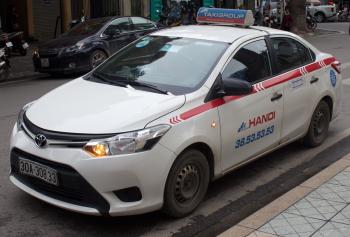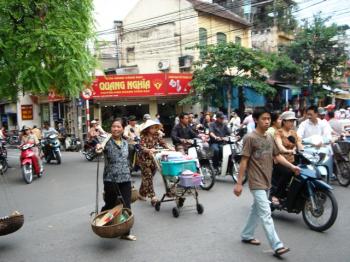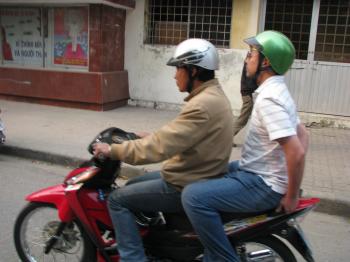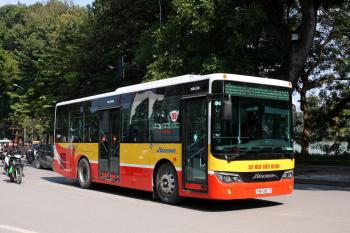Getting Around Hanoi
Getting Around Hanoi
All City Transport Options: What Locals Use and What’s Best for Tourists
General Overview
Navigating the transport scene in Hanoi is a bit like learning a dance – it can be hectic but rewarding once you get the hang of it. You’ll definitely notice that locals never seem to wait for a red light when crossing the street, which can be daunting for newcomers. Just remember to follow their lead, and you’ll be alright!The public transport system is fairly efficient but varies a lot, especially during peak hours. You've got a mix of buses, the newly opened metro lines (like Line 2 that connects Cat Linh and Ha Dong), and of course, motorbikes everywhere. The buses run from around 5 AM to 10 PM and usually cost just 7,000 VND for a ticket, which is a bargain compared to other cities. In contrast, taxis and rideshares can start at around 30,000 VND just to get in the car.
Oh, before I forget, many visitors think they can just hop onto the metro without understanding the routes first. I made that mistake and ended up on the wrong line! Each metro train is labeled, but it can get confusing if you don’t check the end stations. Also, a little local tip: grab the bus map on your phone from the official apps for an easier experience.
There’s a definite rhythm to rush hour here. It’s a bit of a game, trying to weave through the traffic and find a bus that isn't packed. Personally, I've stood cheek-to-cheek with other passengers while trying to navigate the bus 86 towards the Old Quarter during my first week here. Let me just say, it was not my best morning!
If it’s drizzling or the sun is beating down, it’s wise to avoid waiting for buses or walking far – umbrellas and raincoats are lifesavers. There’s nothing worse than showing up at your destination completely drenched or sunburned.
For saving money, consider the tourist pass options available for the metro, which gives you unlimited rides for typically 200,000 VND for three days. It’s definitely more economical than hailing a taxi for every trip.
In the heart of the city, places like Hoan Kiem Lake are easy to access via various bus routes (like bus 9 or 14). Just keep an eye out for crossing motorbikes and pedestrians while you wait!
Overall, getting around in Hanoi is an experience that requires a bit of patience and adaptability. Just take your time, enjoy the bustling environment, and don’t hesitate to ask a local for help; we love to assist! Whether you're taking the bus, hopping on the metro, or choosing that exhilarating motorbike ride, you’re in for an adventure.
Types of Transport

popular with tourists
Taxis in Hanoi are widely available and provide a convenient way to navigate the bustling city, with taxi services operating 24/7. Typically, the fare starts at around 13,000 VND (approximately $0.55) and can average 15,000 VND per kilometer, so a ride from the Old Quarter to Hoan Kiem Lake usually costs about 40,000-60,000 VND. It's advisable to use reputable taxi companies such as Mai Linh or Vinasun, which have consistent pricing and well-maintained vehicles; look for the company name on the side of the taxi and always request a receipt at the end of your journey. To save time, consider using a ride-hailing app like Grab, which offers the same convenience as traditional taxis but allows you to see fares in advance and track your trip. For safety, avoid accepting rides from unmarked vehicles or approaching taxis without visible signage, and ensure the driver uses the meter for fair pricing.
popular with tourists
Auto in Hanoi is widely available and often the most comfortable way to navigate the city's bustling streets, particularly in high-traffic areas like Hoan Kiem and Old Quarter. You can use reputable ride-hailing apps like Grab or Gojek for convenience, with typical fares ranging from 30,000 VND to 150,000 VND ($1.30 to $6.50), depending on the distance and traffic conditions. A key tip for tourists is to confirm your destination and check the route before getting in, as traffic can be unpredictable, especially during rush hours.
Make sure to keep some cash on hand, as not all drivers accept card payments; however, using the app often allows for cashless transactions. Additionally, to save time, especially in busy periods, consider scheduling your ride a bit earlier, as it can take longer than expected to find a car. For safety, always wear a seatbelt, and ensure that the driver is registered in the app for a secure travel experience.
Make sure to keep some cash on hand, as not all drivers accept card payments; however, using the app often allows for cashless transactions. Additionally, to save time, especially in busy periods, consider scheduling your ride a bit earlier, as it can take longer than expected to find a car. For safety, always wear a seatbelt, and ensure that the driver is registered in the app for a secure travel experience.

popular with tourists
Walking in Hanoi is an excellent way to immerse yourself in the vibrant street life and explore the city's historic neighborhoods, including the Old Quarter and Hoan Kiem Lake. Most attractions are within walking distance of each other, and you'll find that navigation can be done easily with maps or GPS on your phone. A key tip for tourists is to wear comfortable shoes, as the streets can be bustling and uneven; also, don't hesitate to step onto the sidewalks, where café seating and shops spill over.
As you walk, be mindful of the traffic; while it's chaotic, locals are generally aware of pedestrians and will navigate around you, but always be alert when crossing roads. Lastly, explore small side streets and alleys—this is where you'll discover hidden gems like local eateries and unique shops that aren't listed in traditional guidebooks.
As you walk, be mindful of the traffic; while it's chaotic, locals are generally aware of pedestrians and will navigate around you, but always be alert when crossing roads. Lastly, explore small side streets and alleys—this is where you'll discover hidden gems like local eateries and unique shops that aren't listed in traditional guidebooks.

The moto network in Hanoi is extensive and a popular way for tourists to navigate the city quickly, with countless drivers available using ride-hailing apps like Grab or Gojek. Typical fares for a short ride within the city center range from 20,000 to 60,000 VND, depending on the distance, and payment can be made through cash or mobile wallet options, making it convenient for tourists. To save time and avoid getting lost, be sure to enter your destination in the app and follow along to ensure the driver takes you the right way, especially in busy traffic. Always wear a helmet, which is provided by drivers, and remain alert for other vehicles, as traffic can be chaotic. Lastly, if you're carrying bags, make sure to secure them close to your body to prevent them from shifting or falling during the ride.

The bus system in Hanoi is extensive, covering key tourist areas such as Hoan Kiem Lake, the Temple of Literature, and the Old Quarter, making it a convenient option for exploring the city. Fares are quite affordable, typically costing around 7,000 to 10,000 VND (about 30 to 40 cents USD), and you can pay in cash directly to the driver or use a contactless transport card for more convenience. A great tip for tourists is to download the 'Hanoi Bus' app, which provides real-time schedules and routes in English, helping you navigate the system with ease. Make sure to be aware of peak hours (typically 7-9 AM and 5-7 PM) when buses can be crowded, and always be mindful of your belongings to ensure a safe journey. Lastly, familiarize yourself with key bus routes, such as Route 86, which connects the airport to the city center, providing a direct and economical option for airport transfers.
Cycling in Hanoi is an increasingly popular way to explore the city, especially with its vibrant street life and scenic views around Hoan Kiem Lake and the Old Quarter. You can rent a bicycle from local shops or use bike-sharing services like "Hanoi Bike" which typically cost around 30,000 to 50,000 VND per hour, with payment options including cash or mobile payment apps. A key route to consider is cycling along the Red River, offering a quieter experience away from the city's buzz while still showcasing beautiful landscapes. For safety, it’s essential to wear a helmet, stay in designated bike lanes where available, and be alert to traffic, as driving can be quite chaotic. Lastly, try to avoid peak hours and opt for early mornings or late afternoons, which can provide a more enjoyable and less congested riding experience.
Here you can learn about all types of transport in Hanoi. What transport is available, how to reach tourist attractions and which mode of transport is optimal.


